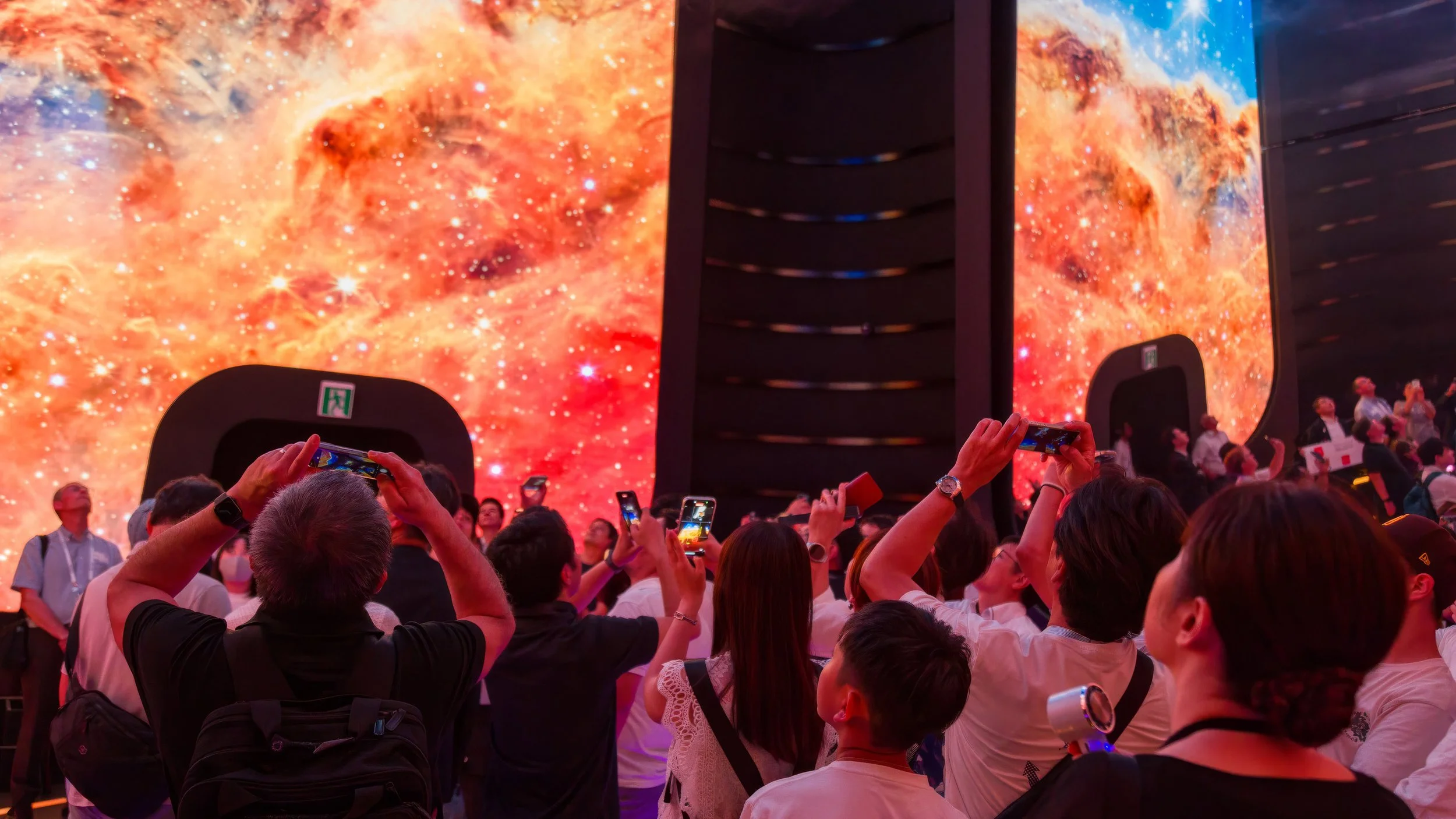Osaka to Orbit
Japan’s space sector charts a bold course at Expo 2025.
Photos Andy Boone
On August 19, 2025, the Kansai chapter of the American Chamber of Commerce in Japan (ACCJ) hosted a landmark panel discussion at Expo 2025 Osaka, Kansai. Members, guests, and the general public gathered inside the USA Pavilion for “Osaka to Orbit,” an event at which four distinguished leaders from Japan’s space industry explored the nation’s expanding role in low earth orbit commercialization, orbital sustainability, and aerospace innovation in a panel discussion moderated by Toshio Ono of Boeing Research & Technology Japan.
Voices from the Final Frontier
The discussion opened with remarks from Dr. Koichi Wakata, chief technology officer at Axiom Space and Japan’s most experienced astronaut. Wakata, who has spent more than 500 days in space and served as the first Japanese commander of the International Space Station (ISS) reflected on his early fascination with space, sparked by a 1973 Gakken children’s encyclopedia, and traced Japan’s evolution from a peripheral player in space exploration to a central contributor to the future of orbital infrastructure. He introduced Axiom’s ambitious plan to construct the world’s first commercial space station, which will succeed the aging ISS. The Axiom Station is designed to support microgravity research, in-space manufacturing, and orbital data centers, offering a platform for both scientific advancement and commercial enterprise. Wakata emphasized that Japan’s technical expertise and international partnerships position it to play a pivotal role in shaping the next chapter of human spaceflight.
Nobu Okada, founder and chief executive officer of Astroscale Holdings, addressed the increasingly urgent issue of space debris. “As there was no existing market, I took on the challenge,” he explained. Examples of about 1,600 new pieces of debris created by major rocket and satellite fragmentations in the second half of 2024 alone were shown. While Astroscale focuses on large debris, NASA estimates more than 100 million objects of one millimeter or smaller exist. In some cases, they can collide with other objects at over 100 times the speed of a bullet. Okada presented Astroscale’s suite of on-orbit servicing technologies, including debris removal, satellite life extension, and inspection capabilities. Okada framed space sustainability not only as a technical challenge but also as a moral and generational imperative. He called on younger innovators to view orbital cleanup as both a societal responsibility and a viable business model, stressing that the long-term viability of space commerce depends on maintaining a safe and navigable orbital environment.
Koichi Yonemoto, cofounder and chief technology officer of Space Walker Inc., introduced Japan’s first reusable suborbital spaceplane initiative. With a similar silhouette to the US space shuttle, more reusable parts would save time and costs. With technical leadership drawn from the Kyushu Institute of Technology and the Tokyo University of Science, Space Walker aims to democratize access to space through tourism, scientific payload delivery, and small satellite launches. Yonemoto outlined a phased development timeline leading to orbital missions and even space tourism over the next 10 to 20 years, supported by strategic partnerships with Kawasaki Heavy Industries, Toray Industries, and the Japan Aerospace Exploration Agency, better known as JAXA. He emphasized that the company’s regional manufacturing base in Fukushima and its planned launch operations in Hokkaido position Space Walker as a catalyst for regional revitalization and industrial diversification.
Osamu Aoki, president and chief executive officer of Aoki Co., Ltd., provided a grounded perspective from Japan’s small and medium-sized enterprise (SME) sector. Aoki’s company, based in Higashi-Osaka, supplies precision components for Astroscale’s servicing satellites and Space Walker’s vehicles. As the smallest Boeing-certified factory in the world, Aoki proudly underscored the value of craftsmanship, proposal-driven engineering, and workforce development. He described his company’s approach to manufacturing as deeply rooted in monozukuri—the Japanese philosophy of making things with spirit and precision. Aoki challenged the audience to recognize the strategic importance of Japan’s SME ecosystem in sustaining a competitive and resilient space economy.
The panel concluded with a lively Q&A session, during which audience members engaged with the speakers on topics ranging from launch site strategy and international collaboration to the role of public–private partnerships in accelerating innovation. The discussion revealed a shared optimism about Japan’s trajectory in space and a collective commitment to ensuring that its contributions are both technologically advanced and socially responsible.
Future Visions
The sold-out Osaka to Orbit event offered a vivid glimpse into Japan’s vision for space—a domain with no boundaries or limits—thanks to the efforts of the ACCJ–Kansai Business Programs, the ACCJ–Chubu Aerospace and Mobility, and the ACCJ Aerospace and Defense Committees, as well as the support of the US Consulate General Osaka–Kobe. From astronauts and entrepreneurs to engineers and machinists, the panelists embodied a unified vision: that space is no longer a distant aspiration but a tangible frontier—one that begins in Osaka and extends far beyond. The ACCJ also thanks Electroimpact, Takata International, MGM Resorts, and Jupiter International Corporation for their generous support, enabling the chamber to take part in Expo 2025’s showcase of global innovation and affirming that Japan’s space sector is not only ready to participate in the next era of exploration but to help lead it.













